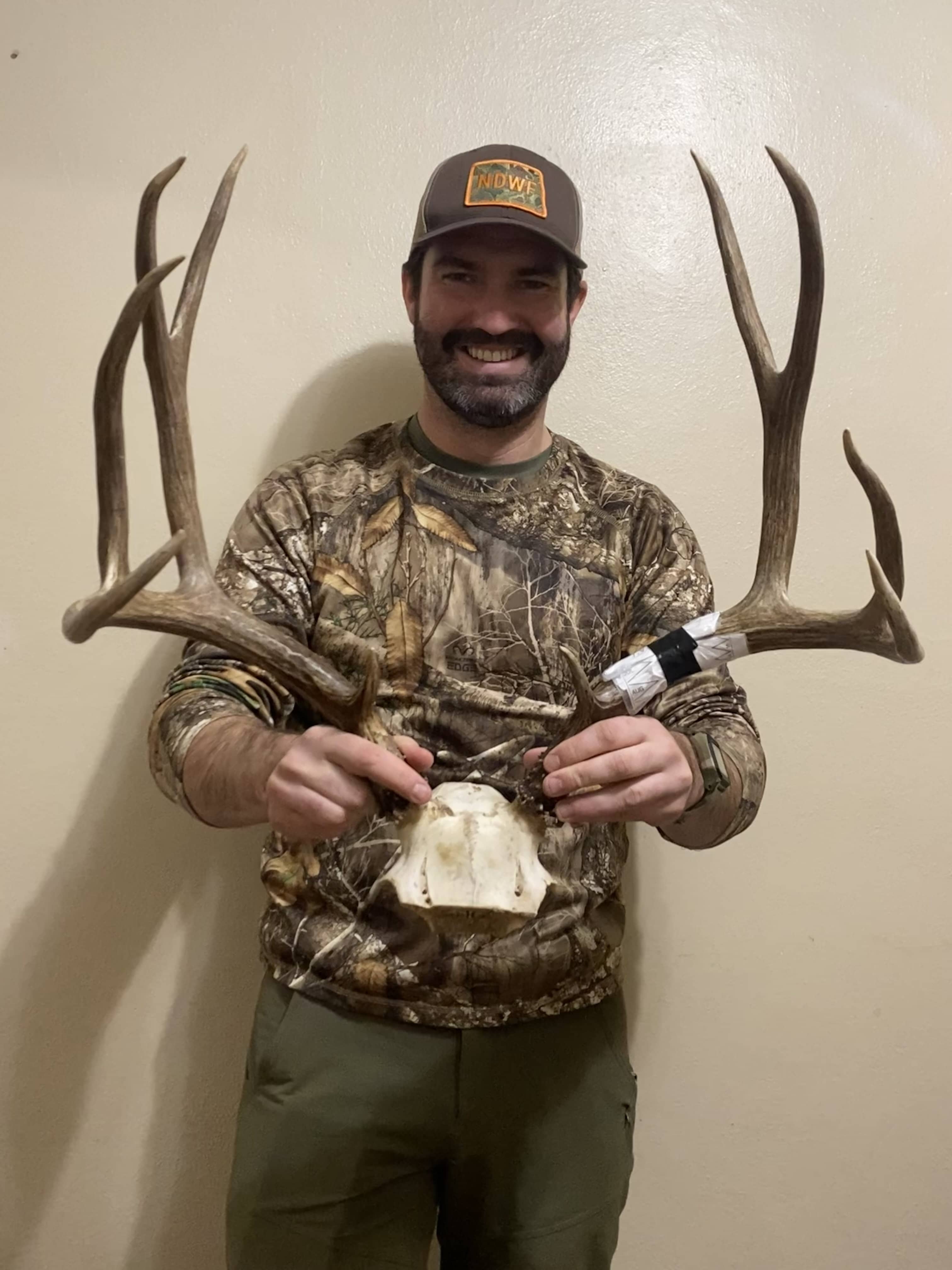
Racking Up Rewards. The author celebrated a last-minute opportunity to harvest a nice buck, rising above the battles against the elements, others, and himself in a deer season hallmarked by determination. DEO Photo by John Bradley.
By John Bradley
It was my third trip to eastern Montana in as many weeks. The week leading up to the gun opener I had high hopes of shooting a dandy mule deer buck. During the archery season, I had snuck in to 70 yards on him twice, but never was able get in closer for a shot. The night before the gun opener, I thought for sure I would glass him up the next morning, sneak in within 300 yards, and be packing him out by noon. It was a foolish idea to think it would be that easy, but I have always been guilty of optimism leading up to a hunt.
I was so confident in this plan that I had changed my zero from 200 yards to 300 yards in anticipation of this scenario. After spending the summer increasing my effective range with the rifle and having it dialed in, I knew I had to aim four inches low at 100 yards and 6 inches low at 200 yards. What I wasn’t prepared for was the little voice in my head finding excuses to give up when I didn’t have a deer in my crosshair on opening day.
When I was set up on a glassing ridge at first light, I didn’t expect to see hunter orange pop over the ridge at 100 yards. It seemed that every spot I moved to on the large Block Management parcel, I’d see it again. Even after waking up earlier than other hunters and hiking in a mile and half away from any road, I would still see hunter orange pop up on ridge lines. I fought the urge to pack up and go home and hunted around other hunters the next two days, seeing only one small buck that another hunter had spooked.
Disappointed, I spent my second trip to Montana working on Plan B – a search for a whitetail buck on a section of state land not too far from the block management unit where I hunted on the first trip. The state section followed a river bottom and reminded me of the deer hunts I went on as a kid in southern Minnesota. As I sat on a high bluff overlooking some tall grass that separated a private clover field and a bedding area, I imagined that a doe would come crashing out of the cover, with a rutting buck in hot pursuit. For two straight days I sat and glassed, but no deer crossed through the section of public land. Instead, the bucks happily grazed, chased does, and bedded in the private land only 300 yards away, knowing exactly the property line that kept them safe.
The third trip to Montana was going to be my final one. With house and work projects filling up my calendar, I wouldn’t have time for another weekend. I decided to change things up and hunt a Block Management area I had never scouted, but a spot where access was limited to only a few hunters at a time. After changing a flat tire with heavy snow on the ground and wind howling, my spirits were in the dumps. And when I didn’t see much sign during my first walk, I made a compromise with myself that I would settle for a “meat buck” or even a doe if an opportunity presented itself. During the hike out on the first day, the little voice in my head routinely called me stupid for paying for an out of state tag and driving hundreds of miles when I could just as easily shoot a doe 20 minutes from my house. Walking the edge of coulees and peering in, I had even thought of a catchy title for this article, “The $600 Doe.”
After an afternoon spent glassing, with snow coming down harder, I worked my way along a ridge, slow hunting my way back to camp. While peering around a corner, a doe popped up at 25 yards. As I went to center my crosshairs low and behind her shoulder, I saw horns start to rise from a thicket patch behind her. I spun my rifle and quickly aimed at the buck, squeezing the trigger just as he was about to bound away. The shot rang true and the buck dropped in its tracks.
With darkness setting in and over a mile hike to camp, I quickly got to work quartering the deer. As I worked back to camp with a heavy pack, I thought about how hunts never go as you expect them to. It’s probably the reason why we as hunters keep coming back for more. If hunts followed the script and we knew success was guaranteed, I think most of us would find a different passion. For me, hunting is a constant battle between me and the little voice in my head telling me to give up or take short cuts. The reward of fighting off that voice in my head, sticking it out when things don’t go as planned, and filling a tag is worth way more than the expense of the trips. If hunting was easy and a sure thing every time, I think I’d trade it in for sleeping in late and watching football. I hope that never happens.
John Bradley is a Dakota Edge Outdoors contributing writer and the Executive Director of the North Dakota Wildlife Federation.
